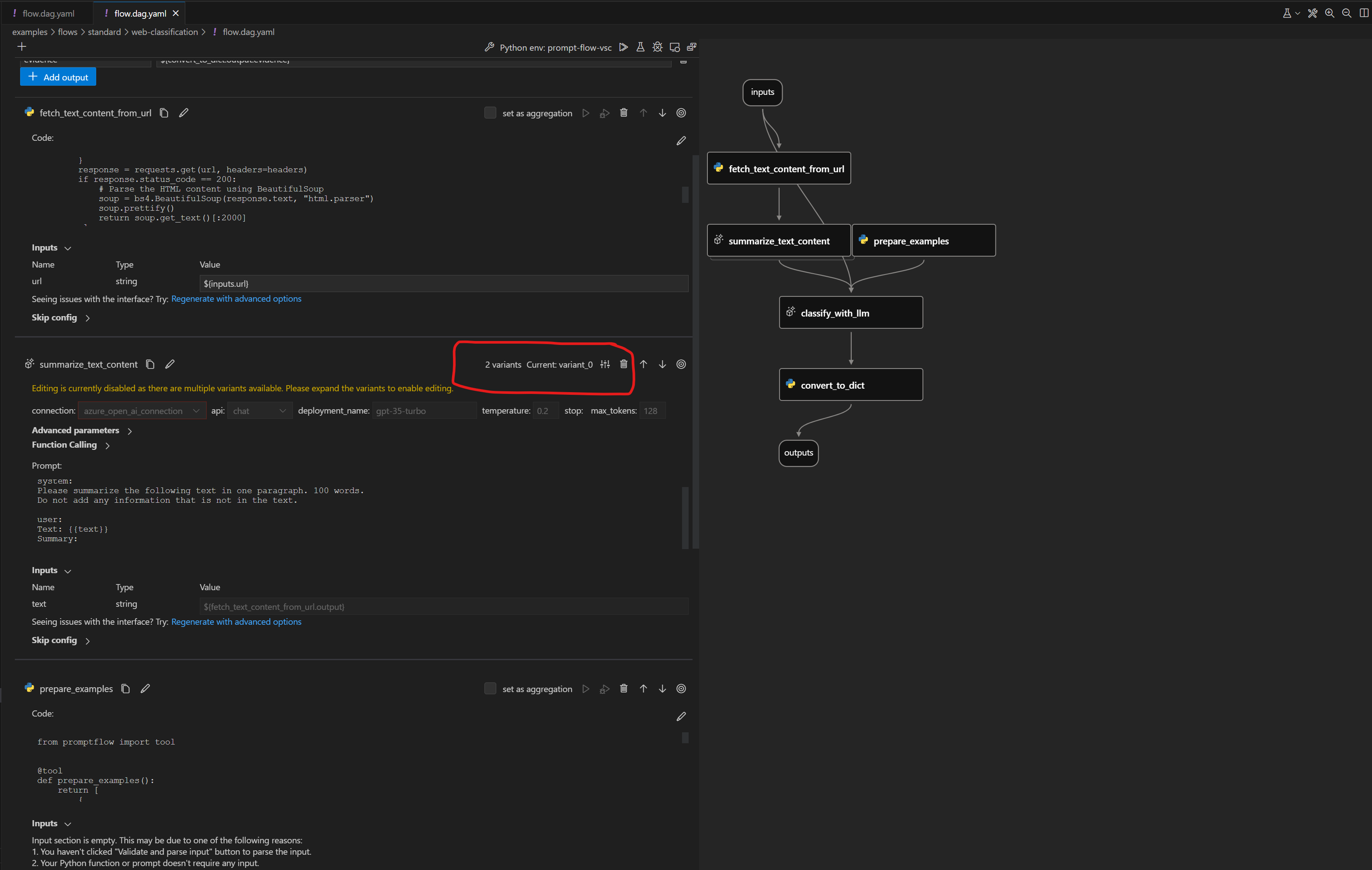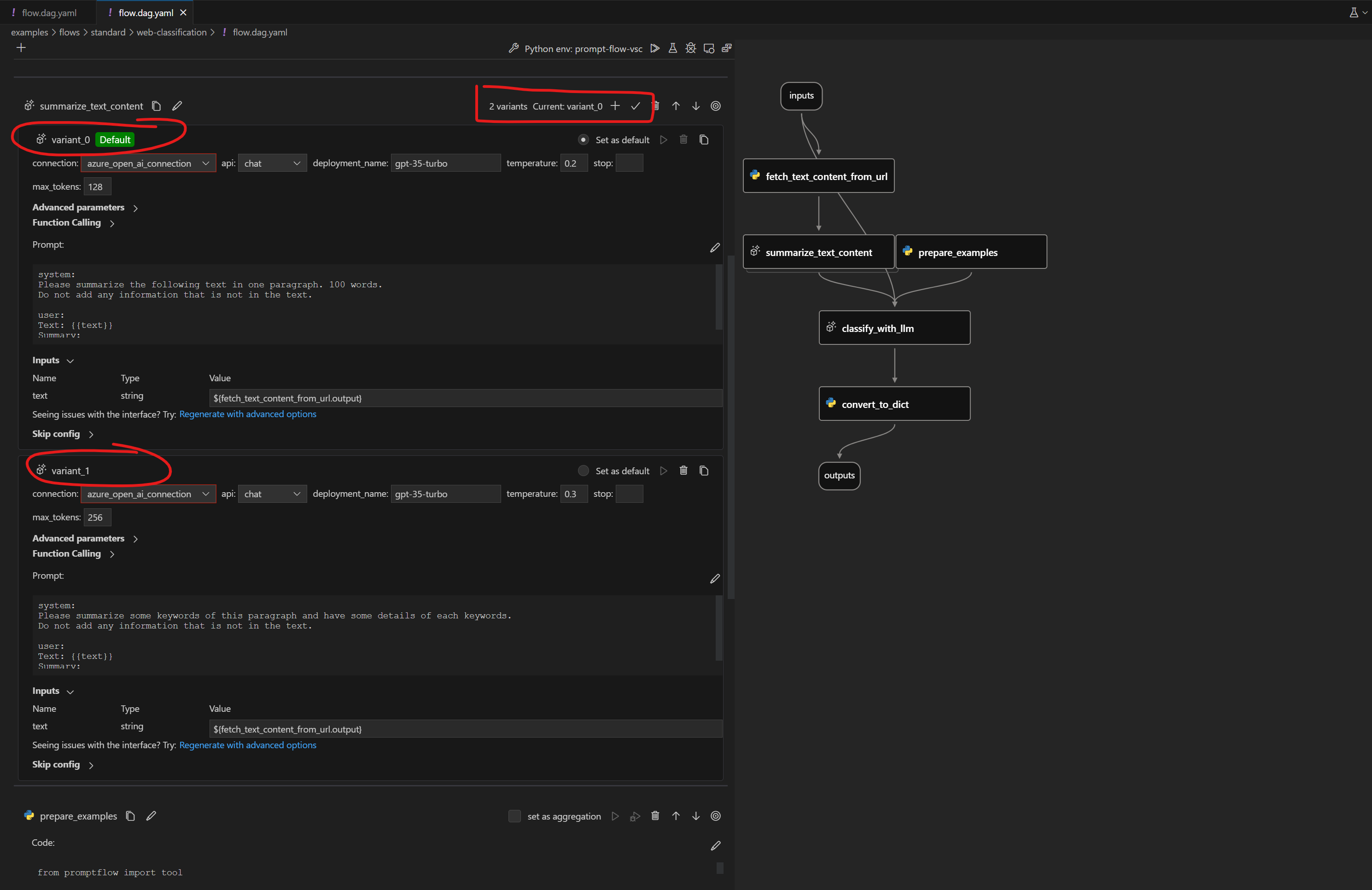Tune prompts using variants#
Experimental feature
This is an experimental feature, and may change at any time. Learn more.
To better understand this part, please read Quick start and Run and evaluate a flow first.
What is variant and why should we care#
In order to help users tune the prompts in a more efficient way, we introduce the concept of variants which can help you test the model’s behavior under different conditions, such as different wording, formatting, context, temperature, or top-k, compare and find the best prompt and configuration that maximizes the model’s accuracy, diversity, or coherence.
Create a run with different variant node#
In this example, we use the flow web-classification, its node summarize_text_content has two variants: variant_0 and variant_1. The difference between them is the inputs parameters:
...
nodes:
- name: summarize_text_content
use_variants: true
...
node_variants:
summarize_text_content:
default_variant_id: variant_0
variants:
variant_0:
node:
type: llm
source:
type: code
path: summarize_text_content.jinja2
inputs:
deployment_name: text-davinci-003
max_tokens: '128'
temperature: '0.2'
text: ${fetch_text_content_from_url.output}
provider: AzureOpenAI
connection: open_ai_connection
api: completion
module: promptflow.tools.aoai
variant_1:
node:
type: llm
source:
type: code
path: summarize_text_content__variant_1.jinja2
inputs:
deployment_name: text-davinci-003
max_tokens: '256'
temperature: '0.3'
text: ${fetch_text_content_from_url.output}
provider: AzureOpenAI
connection: open_ai_connection
api: completion
module: promptflow.tools.aoai
You can check the whole flow definition in flow.dag.yaml.
Now we will create a variant run which uses node summarize_text_content’s variant variant_1.
Assuming you are in working directory <path-to-the-sample-repo>/examples/flows/standard
Note we pass --variant to specify which variant of the node should be running.
pf run create --flow web-classification --data web-classification/data.jsonl --variant '${summarize_text_content.variant_1}' --column-mapping url='${data.url}' --stream --name my_first_variant_run
from promptflow.client import PFClient
pf = PFClient() # get a promptflow client
flow = "web-classification"
data= "web-classification/data.jsonl"
# use the variant1 of the summarize_text_content node.
variant_run = pf.run(
flow=flow,
data=data,
variant="${summarize_text_content.variant_1}", # use variant 1.
column_mapping={"url": "${data.url}"},
)
pf.stream(variant_run)


After the variant run is created, you can evaluate the variant run with a evaluation flow, just like you evalute a standard flow run.
Next steps#
Learn more about: